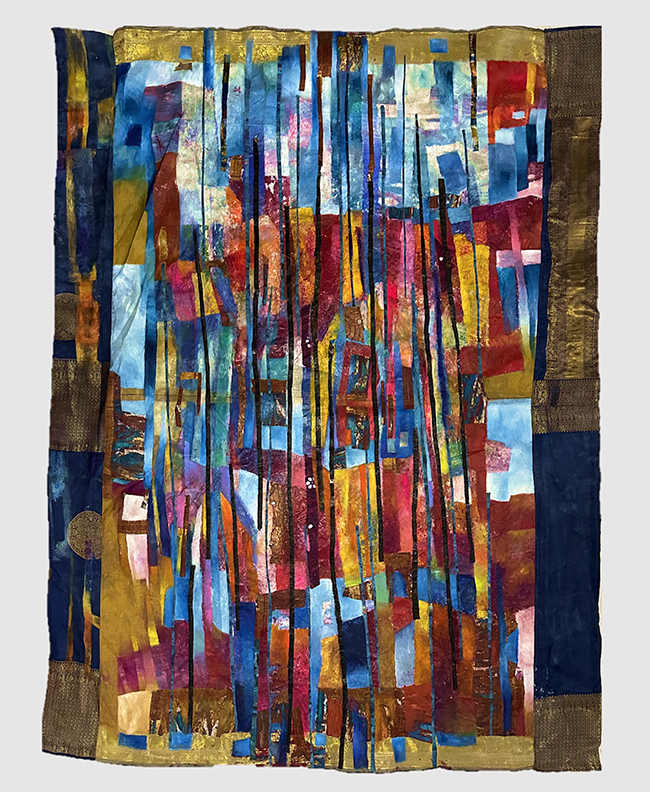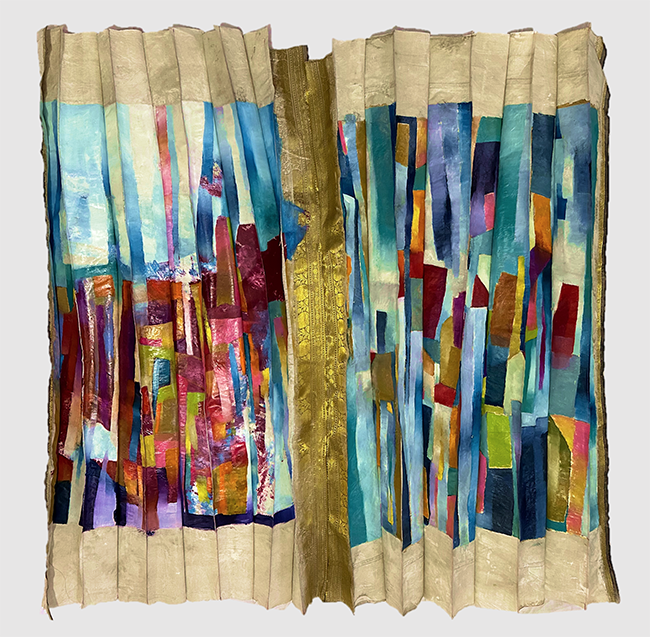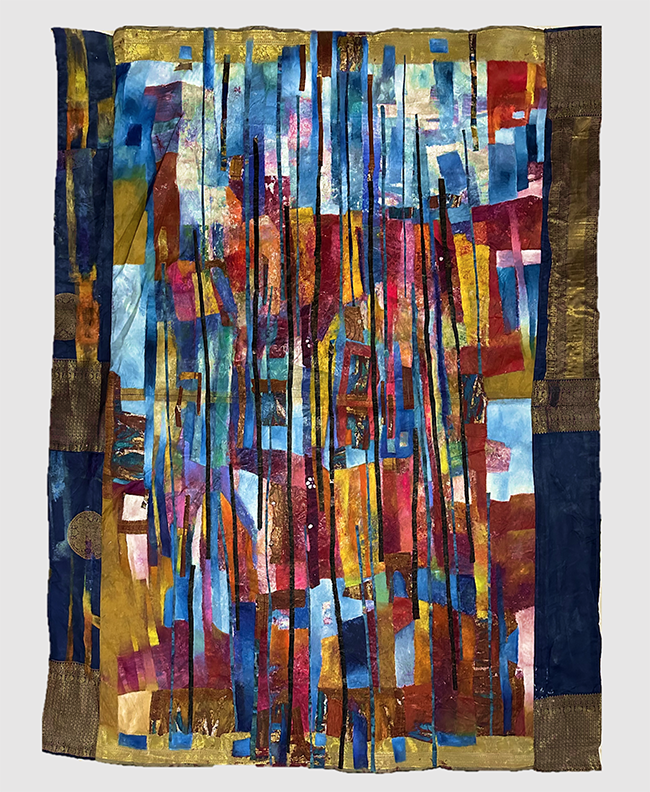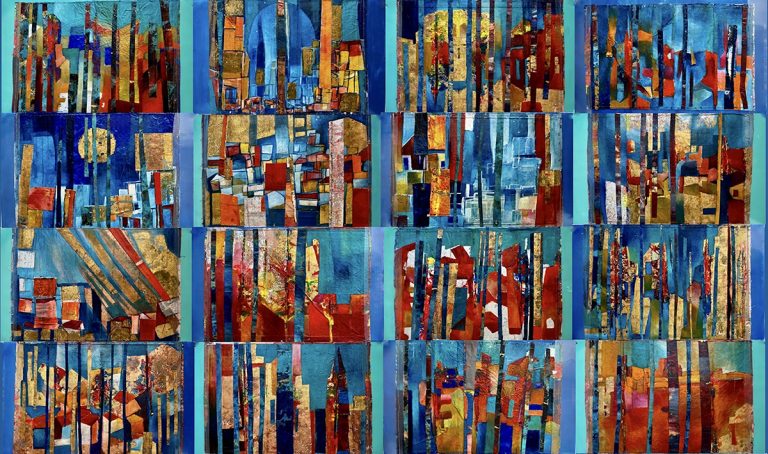Miguel Barros, born in Lisbon in 1962, is an artist who weaves his cultural experiences into a body of work that transcends borders. His creative roots stretch across Portugal, Canada, and Angola, each location leaving an indelible mark on his artistic journey. Barros’ career began with a degree in Architecture and Design from IADE Lisbon in 1984, a background that remains a core influence in his paintings today. In 2014, he relocated from Angola to Calgary, Alberta, expanding his creative horizons while staying grounded in his past.

Barros’ art is a bridge between his global experiences and his formal training in architecture. His architectural background manifests in the structure and form of his paintings, while his life across three continents informs the colors and themes. He describes his work as a blend of “fantasy and the reality of the world,” a reflection of his own journey between cultures. This balance between imagination and reality forms the backbone of his pieces, which often explore themes of identity, memory, and the interplay between the individual and their environment.
One of his projects, the Lusitanian Dream series, features Barros using oil on unconventional surfaces like sarees, as well as traditional canvases and paper. He rejects the limitations of conventional formats, preferring to leave his paintings free, unbound by rigid frames. His artworks are designed to move with the wind, acting like tapestries that sway in the air, reflecting the fluidity of life and memory. This approach allows his paintings to embody the very themes they explore—freedom, imperfection, and movement. By embracing imperfection, Barros challenges the notion of what art “should” look like, pushing the boundaries of his materials to their limits.

The imperfections in his work, rather than being flaws, are what make them true to his vision. Barros seeks “perfect imperfection,” a phrase he uses to describe his belief that truth lies in the raw and unrefined. This philosophy is at the heart of his artistic expression. For him, the materiality of the painting is just as important as the image itself. He paints his origins and memories, always tethered to his Portuguese roots, even as he explores universal themes. His connection to his homeland remains strong, and he expresses this through vivid colors and rich textures that evoke the landscapes, people, and emotions of Portugal.
One of the key aspects of Barros’ work is his exploration of memory and its relationship to place. Despite living far from Portugal, Barros retains a deep connection to his Lusitanian identity. His paintings are imbued with this sense of longing and connection. For Barros, there are “no distances or borders” that limit his feelings of belonging. His art transcends geographical divides, using a universal visual language to evoke emotions and memories that resonate with viewers from all walks of life.

Colourful Memories in a Mosaic is one of his standout pieces. Created using oil on canvas and gold leaf, it measures 180cm by 170cm and reflects his ongoing exploration of memory. The gold leaf adds an extra layer of depth and richness to the piece, creating a tactile quality that invites viewers to explore its surface as much as its imagery. Similarly, It Was Late in a Soft Afternoon, painted on a saree with oil and mixed techniques, captures a moment suspended in time. Its dimensions, 130cm by 140cm, create an intimate space where the viewer is drawn into the softness and warmth of the scene.
Another powerful work, After the Storm, also painted on a saree, explores themes of resilience and renewal. At 165cm by 216cm, it is a larger piece that envelops the viewer in its sweeping brushstrokes and rich textures. The saree, as a material, adds a layer of cultural significance, connecting the work to a broader global context while remaining deeply personal to Barros’ experience.
Barros’ art is not confined by the borders of nations or the rigidity of traditional formats. His work is a reflection of his life—a life lived across multiple continents, shaped by diverse cultures, yet always grounded in his Portuguese identity. His paintings are, in many ways, extensions of himself—free, fluid, and deeply connected to both past and present.
Through his work, Miguel Barros invites viewers to experience a world where fantasy and reality merge, where the imperfections of life are celebrated, and where the boundaries between cultures and memories dissolve. His paintings are a testament to the power of art to connect people across time and space, offering a glimpse into the heart of an artist who is constantly evolving yet forever rooted in his origins.

